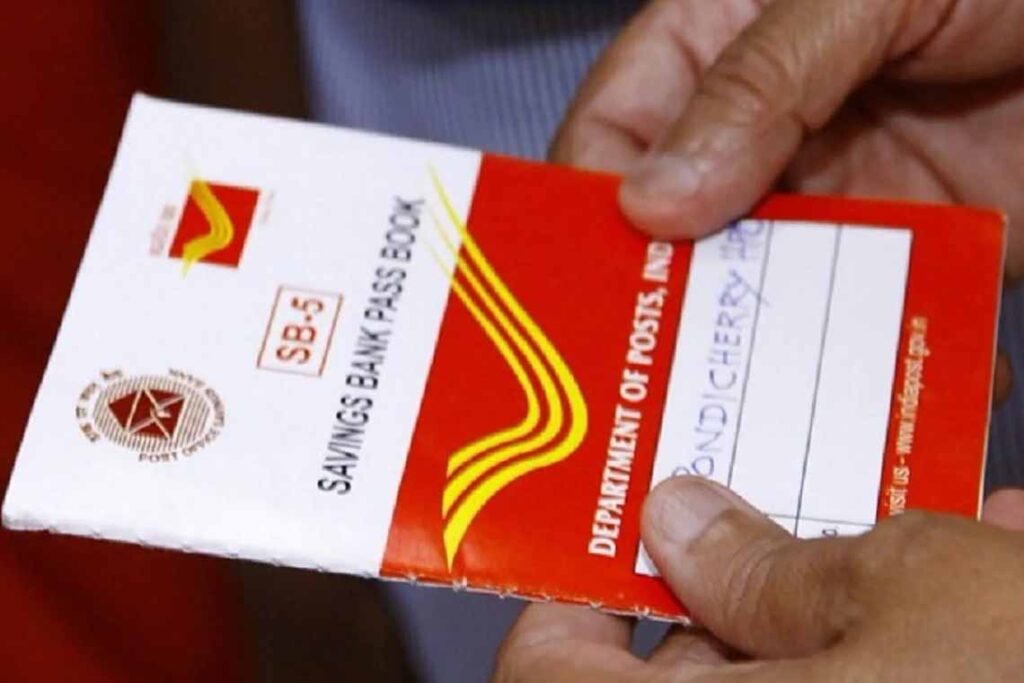1. Firm to be Assessed as Firm
Essential conditions prescribed under section 184 of the Income-tax Act, 1961:
(i) Partnership should be evidenced by an instrument i.e. there should be a written document giving the terms of partnership.
(ii) The individual share of the partners should be specified in that instrument.
(iii) A certified copy signed by all partners of the said instrument of partnership should accompany the return of income in respect of the assessment year for which the assessment as a firm is first sought.
Where any change takes place in the partnership in any previous ye-ar. the firm should furnish a certified copy of the revised instrument of partnership along with the return of income for the assessment year relevant to such previous year.
(lv) There should not be, on the part of the firm, any such failure as is mentioned in section 144,
2. The firm, if it so decides, can give remuneration to its partners (working partners only) and interest on loan and capital of all the partners.
However, no such remuneration / Interest can be given unless it is specifically provided in the partnership deed. The interest and remuneration so provided shall be allowed as deduction while computing the total income of the firm subject to the maximum of the following limits.
(a) interest on loan and capital : 12% p.a.
(b) Remuneration to working partner:
The payment of remuneration to working partner, should relate to a period after the date of the partnership deed and authorized by the partnership deed and it shall be allowed as a deduction only to the extent of the following limits:
| (a) On the first Rs. 3,00,000 of the book-profit or in case of a loss | Rs. 1,50,000 or at the rate of 90% of the book-profit, whichever is more; |
| (b) On the balance of the book-profit | At the rate of 60% |
It is clarified that for the assessment years subsequent to the assessment year 1996-97. no deduction under section 40(b)(v) will be admissible unless the partnership deed either specifies the amount of remuneration payable to each individual working partner or lays down the manner of quantifying such remuneration. [Circular No, 739, dated 25-3-1996]
3. Assessment when Section 184 not complied with [Section 185]
If the firm does not comply with the provisions of section 184 (See para I above) it shall not be allowed any deduction by way of interest, salary, bonus, commission or remuneration and such amount of interest, bonus, salary, commission or remuneration shall not be charged to tax in the hands of partners.
4. Taxation of Limited Liability Partnership (LLP)
The Limited Liability Partnership Act., 2008 has come into effect in 2009.
Taxation of Limited Liability Partnership (LLP) shall be on the same lines as the taxation scheme currently prevalent for general partnerships. i.e. taxation in the hands of the entity and Exemption from tax in the hands of its partners.
Section 2(23) of the Income-tax Act., 1961 provides as under:
(i) ‘Firm” shall have the meaning assigned to it in the Indian Partnership Act. 1932. and shall include a limited liability partnership as defined in the Limited Liability Partnership Act, 2008:
(ii) “Partner” shall have the meaning assigned to it in the Indian Partnership Act. 1932, and shall include, —
(a) any person who, being a minor. has been admitted to the benefits of partnership; and
(b) a partner of a limited liability partnership as defined in the Limited Liability Partnership Act, 200€;
(iii) partnership shall have the meaning assigned to it in the Indian Partnership Act. 1932, and shall include a limited liability partnership as defined in the Limited Liability Partnership Act, 2008.
Thus, a “Limited Liability Partnership (LLP)” and a general partnership will be accorded the same tax treatment.
Signing of Income-Tax Return of LLP [Section 140]:
The LLP Act provides for nomination of “Designated Partners” who have been given greater responsibility. The designated partner shall sign the income-tax return of an LLP, or, where, for any unavoidable reason such designated partner is not able to sign and verify the return or where there is no designated partner as such, any partner shall sign the return.
Recovery of tax of LLP [Section 167C]:
Like section 179 which is applicable for a private limited company, section 167C provides that notwithstanding anything contained in the Limited Liability Partnership Act, 2008, where any tax due from a limited liability partnership in respect of any income of any previous year or from any other person in respect of any income of any previous year during which such other person was a limited liability partnership cannot be recovered, in such case. every person who was a partner of the limited liability partnership at any time during the relevant previous year, shall be jointly and severally liable for the payment of such tax unless he proves that the non-recovery cannot be attributed to any gross neglect, misfeasance or breach of duty on his part in relation to the affairs of the limited liability partnership.
As an LLP and a general partnership is being treated as equivalent (except for recovery purposes) in the Act, the conversion from a general partnership firm to an LLP will have no tax implication if the rights and obligations of the partners remain the same after conversion and if there is no transfer of any asset or liability after conversion. If there is a violation of these conditions, the provisions of section 45 shall apply.
Remuneration to partners shall be the same as for partners of other firms.
Special provisions applicable to Limited Liability Partnership (LLP)
(A) Transfer of capital asset or intangible asset by a private limited company or a non-listed company to Limited Liability Partnership shall not be regarded as a transfer. Correspondingly, a transfer of a share or shares held in a company by a shareholder shall also not be treated as a transfer on conversion of the above company to a limited Liability Partnership [Section 47 (xiiib)]
The Finance (No. 2) Act, 2009 provided for the taxation of LLPs in the Income-tax Act on the same lines as applicable to partnership firms. Sections 56 and 57 of the Limited Liability Partnership Act, 2008 allow conversion of a private company or an unlisted public company (hereafter referred as company) into an LLP. Under the existing provisions of Income-tax Act, conversion of a company into an LLP has definite tax implications. Transfer of assets on conversion attracts levy of capital gains tax. Similarly, carry forward of losses and of unabsorbed depreciation is not available to the successor
The Act has inserted clause (xiiib) to section 47 to provide that
- the transfer of a capital asset or intangible asset by a private limited company or a non-listed company, or
- any transfer of a share or shares held in the company by a shareholder,
on conversion of a private limited company or an unlisted company to a Limited Liability Partnership in accordance with sections 56 and 57 of the Limited Liability Partnership Act, 2008 shall not be regarded as a transfer for the purposes of capital gains tax under section 45, subject to certain conditions. These conditions are as follows:
(a) all the assets and liabilities of the company immediately before the conversion become the assets and liabilities of the limited liability partnership.
(b) all the shareholders of the company immediately before the conversion become the partners of the Limited Liability Partnership and their capital contribution and profit-sharing ratio in the limited liability partnership are in the same proportion as their shareholding in the company on the date of conversion;
(c) the shareholders of the company do not receive any consideration or benefit, directly or indirectly, in any form or manner, other than by way of share in profit and capital contribution in the limited liability partnership:
(d) the aggregate of the profit-sharing ratio of the shareholders of the company in the limited liability partnership shall not be less than 50% at any time during the period of five years from the date of conversion;
(e) the total sales, turnover or gross receipts in business of the company in any of the three previous years preceding the previous year in which the conversion takes place does not exceed Rs. 60,00,000
(ea) the total value of the assets as appearing in the books of account of the company in any of the three previous years preceding the previous year in which the conversion takes place does not exceed Rs. 5 Crore; and
(f) no amount is paid, either directly or indirectly, to any partner out of balance of accumulated profit standing in the accounts of the company on the date of conversion for a period of three years from the date of conversion.
(B) Special provisions applicable in ease of conversion of a private limited company or a non- listed company into LLP
(1) Depreciation to be allowed proportionately in the year of Conversion [First proviso to section 32(1)]
The Act has amended fifth proviso to section 32(1) to provide that the aggregate depreciation allowable to the predecessor company and successor LLP shall not exceed, in any previous year. the depreciation calculated at the prescribed rates as if the conversion had not taken place. In other words. deprecation shall be allowed to the predecessor company and successor LLP in the proportion of a number of days the assets are used by the predecessor and successor assessee.
(2) Successor LLP will be allowed deduction of payment under Voluntary Retirement Scheme for the unexpired period [Section 35DDA(4A)]
Where there has been reorganization of business, whereby a private company or unlisted public company is succeeded by a limited liability partnership fulfilling the conditions laid down in the proviso to clause (xiiib) of section 47, the provisions of section 35DDA shall, as far as may be, apply to the successor limited liability partnership, as they would have applied to the said company, if reorganization of business had not taken place.
(3) Cost of acquisition of the asset in case the predecessor company has claimed deduction under section 35AD [Explanation 13 to Section 43(1) Amended]
It is provided that the cost of acquisition of the capital asset for the successor LLP, in case the predecessor company has claimed deduction under section 35AD, shall be nil.
(4) Actual cost of the block of assets in the case of the successor LLP [Explanation 2C in section 43(6) Inserted]
The actual cost of the block of assets in the case of the successor LLP shall be the written down value of the block of assets as in the case of the predecessor company on the date of conversion.
(5) Successor LLP and shareholder of the Predecessor company liable for capital gains If prescribed conditions not satisfied In any subsequent year [Section 47A (4)]
Where any of the conditions laid down in proviso to section 47(xiiib) are not complied with, in any subsequent assessment year the consequences shall be as under:
(a) the amount of profits or gains arising from the transfer of such capital asset or intangible asset not charged under section 45 by virtue of conditions laid down in the said proviso shall be deemed to be the profits and gains chargeable to tax of the successor Limited Liability Partnership for the previous year in which the requirements of the said proviso are not complied with.
(b) the amount of profits or gains arising from the transfer of share was shares not charged under section 45 by virtue of conditions laid down in the said proviso shall be deemed to be the profits and gains chargeable to tax of the shareholder of the predecessor company for the previous year in which the requirements of the said proviso arc not complied with.
(6) Cost of capital asset to LLP shall be the cost to be previous owner [Section 49(1)]
The cost of asset in the hands of the LLP in the case of conversion of a private limited company or an unlisted company shall be the cost to the previous owner.
(7) Cost of the right of partner referred to in section 42 of the limited liability Partnership Act, 2008 on conversion of company to Limited Liability Partnership [Section 49(2AAA)]
Where the capital asset being rights of a partner referred to in section 42 of the Limited Liability Partnership Act, 2008 became the property of the assessee on conversion as referred to in clause (xiiib) of section 47, the cost of acquisition of the asset shall be deemed to be the cost of acquisition to him of the share or shares in the company immediately before its conversion.
Section 42 of the Limited Liability Pai1ncnhip Act. 200K provides as under:
Partners Transferable Interest [Section 42]
(1) The tights of a partner to a share of the profits and losses of the limited 1iabily partnership and to receive distributions in accordance with the limited liability partnership agreement arc transferable either wholly or in part
(2) The transfer of any right by any partner pursuant to sub-section (1) does not by itself cause the disassociation of the partner or a dissolution and winding up of the limited liability partnership.
(3) The transfer of right pursuant to this section does not, by itself, entitle the transferee or assignee to participate in the management or conduct of the activities of the limited liability partnership, or access information concerning the transactions of the limited liability partnership.
(8) Carry Forward and set-off of losses [Section 72A(6A)]
The Act has allowed carry forward and set-oft of accumulated loss and unabsorbed depreciation to the successor LLP which fulfills the above-mentioned conditions.
The accumulated loss and the unabsorbed depreciation of the predecessor company. shall be deemed to be the loss or allowance for depreciation of the successor limited liability partnership for the purpose of the previous year in which business reorganization was affected and other provisions of this Act relating to set off and carry forward of loss and allowance for depreciation shall apply accordingly. In other words, accumulated loss shall be allowed for fresh 8 years and unabsorbed depreciation will be allowed to be earned forward indefinitely.
However, if any of the conditions laid down in the proviso of section 47(xiiib) are not complied with, the set off of loss or allowance of depreciation made in any previous year in the hands of the successor limited liability partnership, shall be deemed to be the income of the limited liability partnership chargeable to tax in the year in which such conditions are not complied with.
Meaning of Accumulated Loss:
‘Accumulated loss’ means so much of the loss of the predecessor firm or the proprietary concern or the private company or unlisted public company before conversion into limited liability partnership or the amalgamating company or the demerged company, as the case may be, under the head ‘Profits and gains of business or profession (not being a loss sustained in a speculation business) which such predecessor firm or the proprietary concern or the company or amalgamating company or demerged company, would have been entitled to carry forward and set off under the provisions of section 72 if the reorganization of business or conversion or amalgamation or demerger had not taken place.
Meaning of unabsorbed depreciation:
“Unabsorbed depreciation” means so much of the allowance for depreciation of the predecessor firm or the proprietary concern or the private company or unlisted public company before conversion into limited liability partnership or the amalgamating company or the demerged company, as the case may be. which remains to be allowed and which would have been allowed to the predecessor firm or the proprietary concern or the company or amalgamating company or demerged company, as the case may be, under the provisions of this Ad, if the reorganization of business or conversion or amalgamation or demerger had not taken place.
(9) MAT credit of predecessor company will lapse [Section 115JAA]
Credit in respect of (ax paid by a company under section 115JB is allowed only to such company under section 115JAA. It has been clarified that the tax credit under section 115JAA shall not be allowed to the successor LLP.
5. Alternate Minimum Tax (AMT) on all persons other than companies [Sections 115JC to 115JF Chapter XII-BA]
AMT, which was hitherto applicable to LIP only, has been made applicable to all assessee other than a company.
Where the regular income-tax payable for a previous year by a person (other than a company) is less than the alternate minimum tax payable for such previous year, the adjusted total income shall be deemed to be the total income of such person and he shall be liable to pay income-tax on such total income at the rate of 18.5%. [Section 115JC(1)]
AMT to be reduced in case of unit located In an International Financial Services Centre [ w.e.f. A.Y. 2019-20]
In case of a unit located in an International Financial Service center, the alternate minimum tax under section 115JC shall be charged @ 9% instead of 18.5%.
(a) As per section 115JC(2), “ Adjusted total income’ shall be the total income before giving effect to provisions of this Chapter i.e. Chapter XII-BA as increased by:
(i) the deductions claimed, if any, under sections 80-IA to 80RRB other than section 80P included in Chapter VI-A.
(ii) deduction claimed, if any, under section 10AA, and
(iii) deduction claimed, if any, under section 35AD as reduced by the amount of depreciation allowable in accordance with the Provisions of section 32 as if no deduction under section 35AD was allowed in respect of the assets on which the deduction under that section is claimed.
(b) “Alternate Minimum Tax” shall be the amount of tax computed on adjusted total income at a rate of 18.5% (Section 115JF(b)]
(c) “Regular income-tax” shall be the income-tax payable for a previous year by a person other than a company on his total income in accordance with the provisions of the Act other than the provisions of Chapter XII-BA, [Section 115JF(d)]
Report from an accountant [Section 115JC(3)]:
Every person to whom this section applies shall obtain a report, in such form as may be prescribed, from an accountant. certifying that the adjusted total income and the alternate minimum tax have been computed in accordance with the provisions of this Chapter and furnish such report on or before the due date of furnishing of return of income under section 139(1).
To whom AMT shall be applicable [Section 115JEE (1)]
The provisions of AMT shall apply to a person who has claimed any deduction under:
(a) sections 80-IA to 80RRB other than section 80P; or
(b) section 10AA;
(c) Section 35AD.
Tax credit for AMT:
Section 115JD provides the credit for tax (tax credit) paid by a person on account of AMT under Chapter XII-BA shall be allowed to the extent of the excess of the AMT paid over the regular Income-tax. This tax credit shall he allowed to be carried forward up to the fifteenth assessment year immediately succeeding the assessment year for which such credit becomes allowable. It shall be allowed to be set oil for an assessment year in which the regular income-tax exceeds the AMT to the extent of the excess of the regular income-tax over the AMT.
No interest shall be payable on tax credit allowed under section 115JD.











